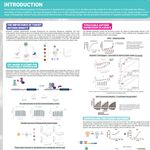Pathology Laboratory Utilization Manager, Special Testing Manager, Physician/Laboratory Consultant, Director of Specimen Referral, Adjunct Assistant Professor
BIOGRAPHY
Speaker
Event Date & Time
Date: September 23, 2021
Time: 11:00am (PDT), 2:00pm (EDT)
Time: 11:00am (PDT), 2:00pm (EDT)
Abstract
Primary aldosteronism (PA) is the most common form of secondary hypertension, caused by hyperactivity in one or both of the adrenal glands that leads to inappropriate aldosterone production. The prevalence of PA among general and resistant hypertensive populations ranges from 5-20%. PA is considered highly treatable and potentially curable. As such, the Endocrine Society guidelines recommend screening for PA in high risk populations using the plasma aldosterone/plasma renin ratio (ARR). It is generally accepted that both the plasma renin and aldosterone levels tend to fall with advancing age and plasma renin decreases more than aldosterone; consequently, the ARR increases in the elderly which supports the need for age-specific ARR cutoffs. Traditionally, renin has been measured by a plasma renin activity (PRA) radioimmunoassay or liquid chromatography tandem mass spectrometry (LC-MS/MS). Direct renin concentration (DRC) immunoassays, also known as plasma renin concentration (PRC), have recently become more popular because of numerous benefits including walk-away automation, shorter turnaround times, and excellent reproducibility compared to PRA. In this webinar, we will review the key differences between PRA and DRC assays and discuss the utility of proposed age-specific ARR cutoffs for PA screening calculated using direct renin measurement.
Learning Objectives:
- Provide an overview of the renin-angiotensin-aldosterone system (RAAS) and implication on Hypertension.
- Describe and understand key differences between plasma renin activity (PRA) assays and direct renin concentration (DRC) assays.
- Discuss proposed age-specific plasma aldosterone/plasma renin ratio (ARR) cutoffs for PA screening calculated using DRC.
Webinars will be available for unlimited on-demand viewing after live event.
LabRoots is approved as a provider of continuing education programs in the clinical laboratory sciences by the ASCLS P.A.C.E. ® Program. By attending this webinar, you can earn 1 Continuing Education credit once you have viewed the webinar in its entirety.
You May Also Like
Loading Comments...





